The Solar System Reimagined: A Basketball-Sized Sun
Written on
Chapter 1: The Concept of Scale
When visualizing the solar system, many illustrations found online often distort the sizes and distances for simplicity. Typically, this results in planets appearing either too close to the Sun, too large, or the spaces between them not accurately representing reality. In this article, we'll delve into how our solar system would appear if the Sun were the size of an ordinary basketball.
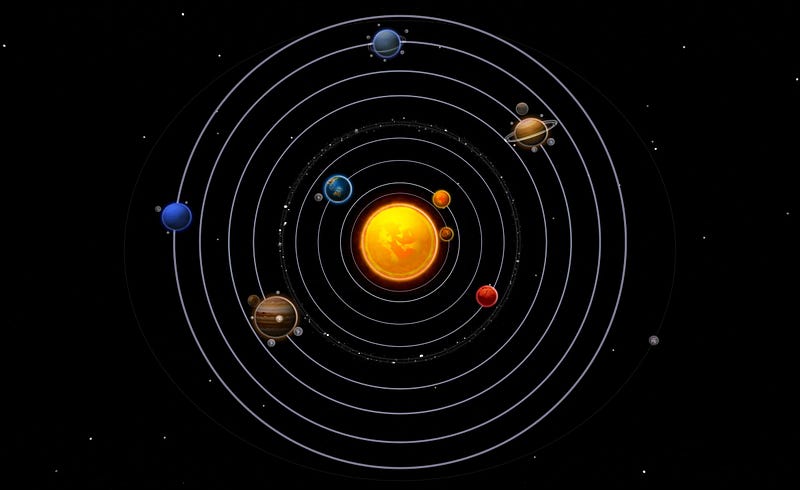
Chapter 2: Planetary Sizes and Distances
If we scale the Sun down to the size of a basketball, the dimensions of the planets would be as follows:
- Mercury would measure approximately 0.86 mm in diameter and sit 11 meters from the Sun.
- Venus would grow to 2.1 mm in size and be located 21 meters away.
- Earth would be 2.2 mm across, positioned 29 meters from the Sun.
- Mars would be 1.2 mm in diameter, situated 44 meters away.
- The asteroid belt would lie between 63 to 92 meters from the Sun, with Ceres, the largest object within it, only 0.17 mm in size.
For better visualization, let’s utilize an American soccer field, as the markings can help illustrate the distances involved. The planets are enlarged in this representation for visibility.

Jupiter would be represented at 2.5 cm in diameter and be located 149 meters from the Sun. Saturn would have a diameter of 2 cm, with its rings extending to 4.9 cm, at a distance of 275 meters—spanning over two soccer fields. Uranus would be 8.9 mm and positioned 500 meters away, while Neptune would be 8.6 mm at a distance of 790 meters.
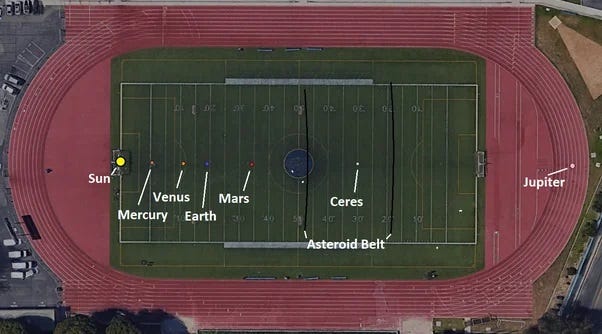
The Kuiper Belt would stretch from 790 to 1,300 meters from the Sun, with Pluto measuring 0.42 mm in diameter. The scattered disk, primarily comprising small icy bodies, would reach up to 3,200 meters. The heliopause, which marks the boundary where solar wind pressure balances with interstellar medium pressure, would also be included in this model. The largest object in the scattered disk, the dwarf planet Erida, would measure 0.41 mm and be found at an average distance of 1,600 meters from the Sun.
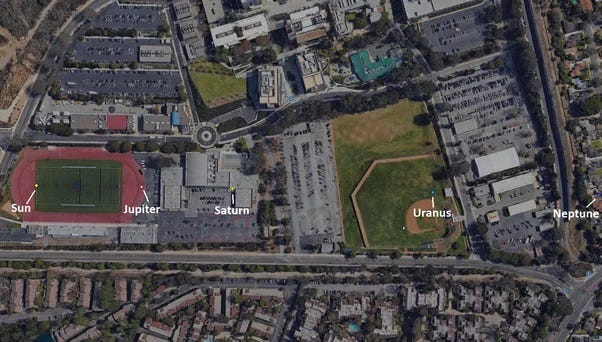
The Oort Cloud would extend from 51 to 130 kilometers from our scaled basketball Sun.
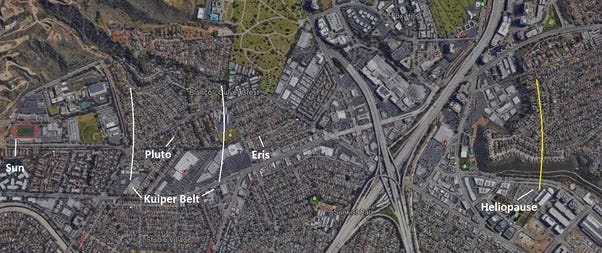
Additionally, the closest star, Proxima Centauri, would be about 3.8 cm in diameter and situated roughly 7,000 kilometers away. In this scenario, our Milky Way galaxy would measure around 162 million kilometers, comparable to the distance between the Earth and the Sun.
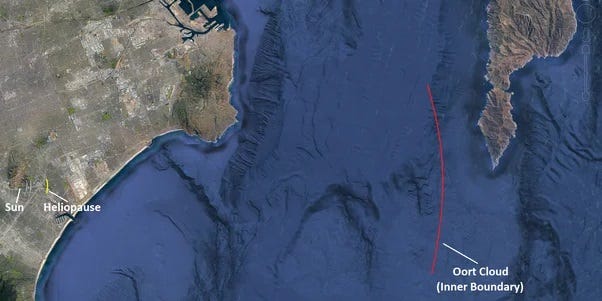
If you’re interested in more articles about space, please clap! Subscribe to our channel and feel free to ask any questions, which I will address in future articles. If you appreciate my work, you can support me by joining Medium for just $5 a month, helping us create even better content.